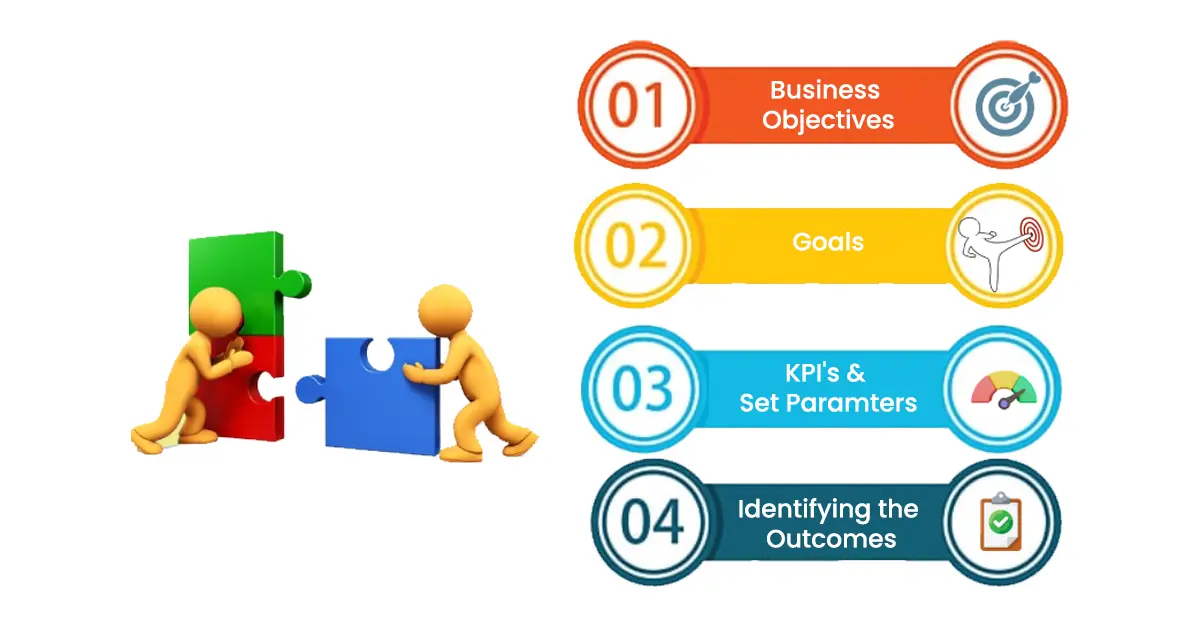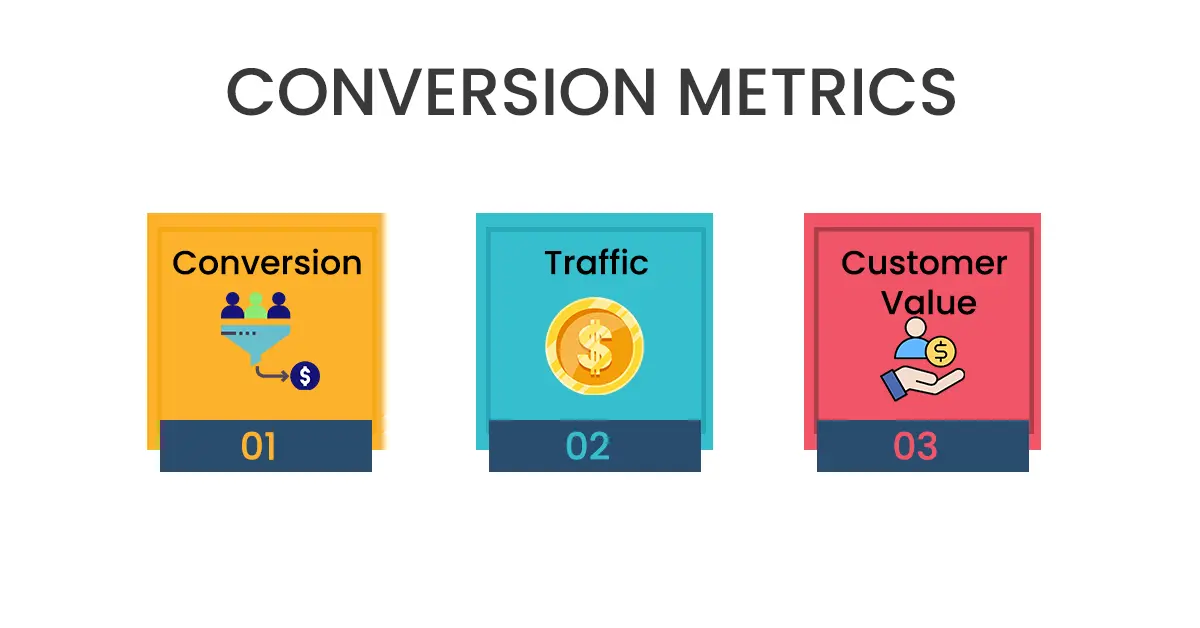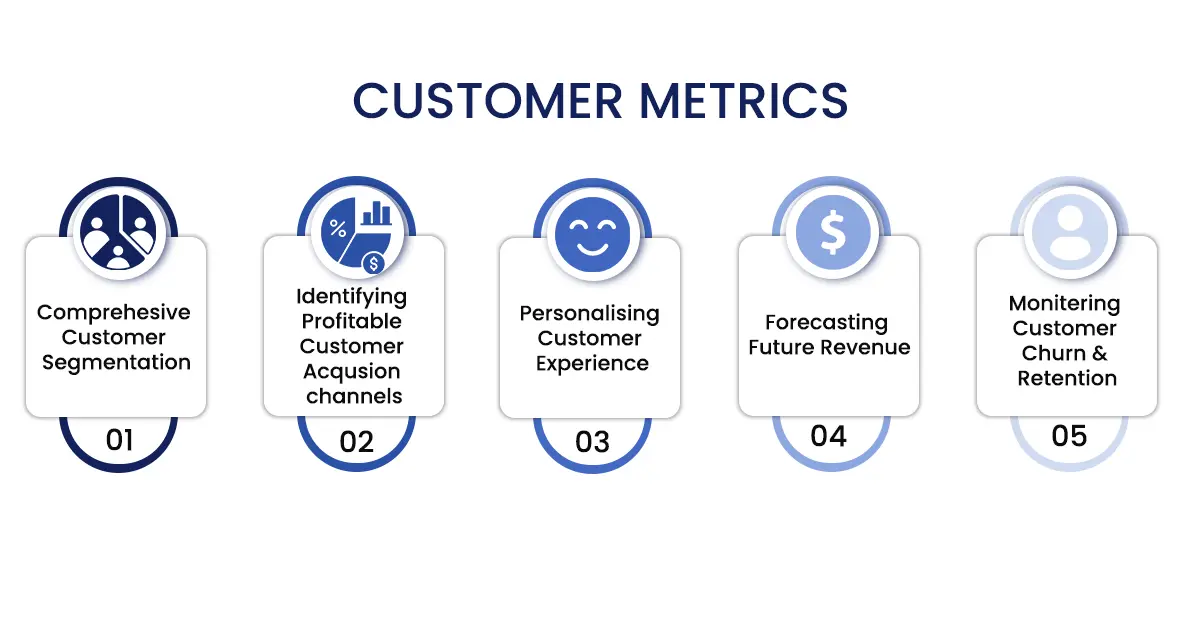How to Measure Marketing Performance: A Guide to Maximize Conversions
In today’s quick changing digital landscape, businesses need to constantly adapt to competitive game. Good Marketing plays a key role in this. But even the best planned campaigns can miss the mark if you don’t have clear ways to track how well they are doing.
Measuring how your marketing is performing isn’t just about looking at numbers.
It’s about getting gaining insights that help you turn more leads into customers and grow your Business.
In this blog will explore you how to check your marketing performance to boost your conversions making sure you marketing efforts yield visible results.
Importance of Measuring Marketing Performance
Tracking marketing performance is critical for any business to win in the hyper-competitive environment. This gives a clear idea of the return on investment for good and bad, so that companies can distribute their resources correctly to increase ROI.
In monitoring performance, companies can determine which strategies are working and fine-tune those that are not performing well to ensure marketing dollars have real value.
In addition to figuring out what works, performance measurement offers valuable clues about how customers behave. Learning how your users engage with your brand is part of what then leads to you tailoring campaigns more toward satisfying their needs which ultimately provides a greater chance for success.
Data-driven decisions can only replace guesswork, which allows marketing efforts to be more effective and profitable.
Regular performance evaluation enables businesses to act swiftly when market dynamics change. Timely shifts of messaging or targeting in a campaign that is not performing can keep it on course and maintain your resources to get the results you need.
Without proper measurement of performance, marketing objectives can easily start to deviate from business goals all resulting in an ineffective effort. The software also gives businesses a competitive advantage: it keeps them ahead of the curve by enabling informed, responsive decisions pertaining to industry trends.
In essence, you cannot optimize your campaigns if you do not measure how well they perform doing so directly impacts long-term business growth and helps keep ahead of the fast-moving competition.
Tools and Platforms for Measuring Marketing Performance

There are many sales & marketing automation tools and platforms out there that help businesses keep a tab on their marketing performance. These tools cover everything from web traffic and user engagement, to conversion rates and ROI. Here are a few of the most popular and useful:
Google Analytics:
This is one of the most popular tools and works best to get more detailed insights about your website traffic, user behavior as well as conversion paths. It is crucial in order to trace the impact of digital marketing efforts.
HubSpot:
One of the more comprehensive marketing platforms available, HubSpot provides tools for every level of your inbound strategy from email to social media and content creation with detailed tracking.
SEMrush:
Best for SEO and Content Marketing. SEMrush is popular for its Ability to provide features like site audits, keyword rankings, backlinks etc.
Learn how to outrank your competitors by using SEO reverse engineering to analyze their strategies. Check out our previous blog on SEO Reverse Engineering for more insights.
Hootsuite:
All-in-one social media marketing App, Scheduling the posts, monitoring engagement and analyzing returns on your investments of particular campaigns are offered.
Google Ads:
Data such as impressions, clicks, and conversion rates of every paid advertising campaign with Google Ad can be found here.
Eron CRM:
Eron CRM is an approach to managing interactions with customers that will change your business observer like recording transactions through the use of internet-based technologies and other ways to handle customer relationships.
By helping you to better manage contact information, it stores all of your customer data and makes certain that clients can reach them.
Analytics and Reporting Detailed analytics around customer behavior, sales performance, and market trends making data driven decisions faster.
Its stringent contact management ensures that all customer data is structured and gathered in one place, so your team can engage clients efficiently.
Native Solutions to Measure Marketing Performance
Social media platforms are no longer just communication channels they have also become key marketing performance measurement tools in today’s digital world.Businesses that depend a lot on social media in order to fuel their marketing strategies can find such tools extremely handy.
Facebook Insights:
With Facebook Insights, you can measure engagement and reach for your paid social campaigns. It provides data about your audience: age, sex and from where they are watching you so that you can create content adjusted to these segments.
Or you can view the performance of individual posts, ads and overall page activity insights that will give you an idea what works well on your audience so as to optimize content.
Instagram Insights:
Instagram Insights provides this intelligence around post-performance, the growth in followers and how they engage. This is especially important for measuring the performance of different types of content (photos, videos, stories) with your followers.
By understanding which posts drive the most engagement, you can refine your Instagram strategy and ensure that your Instagram marketing efforts are effective.
LinkedIn Analytics:
View LinkedIn Analytics for your organic posts. The tool also tracks engagement metrics like likes, shares and comments along with the entire post performance overall as demographics.
This insight will allow you to make more strategic decisions around how and with whom to best utilize your LinkedIn marketing strategy along with other determining factors that can help target industries or job roles better.
Twitter Analytics:
Provides tweet-level metrics such as impressions, retweets and likes along with audience demographics. It will help you monitor the performance of your account as a whole and use it to fine-tune what type of content resonates best with your audience which is invaluable information when building out Twitter marketing strategy.
It also gives you information on what your followers are interested in and doing, so that you can better write tweets with the interests of a target audience.
Although these native tools are convenient to use and especially offer invaluable perspectives, they will often lack the same level of customization as third-party platforms.
But with wider marketing performance measurement, they still remain a key consideration channels that can be used to track social media activity and refine campaigns for improved results.
The Importance of Measuring Marketing Performance in Your Business

For any business in the world and other industries, measuring marketing performance is a must. When you have the right data in hand, it is easier to make decisions around where and how much money you should allocate towards your marketing spends. This reduces the waste, and makes your campaigns that much more effective.
Based on the Data of customer performance, you get to KNOW YOUR CUSTOMER! You can now write marketing messages that are then accurate, sharp and bearing in mind the voice of your audience.
If you know what strategy is working best, performance measurement delivers results with the least cost. This results in a greater return on investment (ROI) for your marketing. Businesses that measure how well their marketing is performing are able to respond sooner in market shifts and outpace competitors.
Regular performance tracking ensures that you stay on course to achieve your marketing goals. It allows you to make adjustments when necessary and avoid falling short of your objectives.
Setting Clear Goals and Objectives
You need to define the marketing goals & objectives before you can go about measuring your performance. This is an often overlooked step, but a critical one to make sure that your performance metrics align with the business strategy.
It begins by defining your Smart goals (Specific, Measurable, Achievable, and Relevant & Time-bound). So, instead of saying we want to increase website traffic for instance, you could set a goal that reads as We will increase web site visitors by 20% over the next three months with focused content material marketing and social media campaigns.
When you identify your goals, establish them into smaller objectives that are easier to reach. If your goal is to get more traffic on your website, you can say that one of my objectives will be to publish three blog posts a week and share them through social media.
Having clear goals and objectives makes it easier to track progress and measure success. It also ensures that your marketing efforts are aligned with your overall business strategy.
Key Metrics for Measuring Marketing Performance
There are some key metrics that give businesses clarity over the effectiveness of their efforts in understanding marketing performance. In general, there are three primary types of these metrics: Conversion Metrics, Customer Metrics, ROI Metrics.
All three offer different nuanced pieces of information that are vital to making your conversions as high, and business growth as successful, possible.
1. Conversion Metrics

Conversion Rate:
This metric will help you understand what percentage of visitors take the desired action on your site, such as purchasing something or filling out a form or subscribing to an email list. If a lot of people click on the CTA, this means that whatever your marketing did prior to showing it worked well in persuading someone take action at last.
You need to continue monitoring this metric so you can observe how effective your campaigns are and adjust them accordingly for the best possible performance.
Read our previous blog post on Conversion Rate Optimization and learn how to increase your marketing conversion rate to maximize the impact of your marketing efforts.
Cost Per Conversion (CPC):
The amount at which a single acquisition of conversion occurs. You want to keep that cost as low as you can possible go with the same results on your marketing objectives. CPC lets you know which channels and methods are delivering the most cost-effective conversions so that you can budget accordingly.
Leads:
Leads Generated measure the number of interested customers you have in your product or service. Here a barometer of how effectively your marketing efforts are performing to draw and engage buyers. Based on how many good leads your strategies attract, you can improve the quality and quantity of new leads generated.
Sales Revenue:
Finally, at the centre of everything is making sales Revenue. This particular metric assesses the amount of money you have generated from your marketing campaigns in total. Linking your one-to-one marketing campaigns to sales results can help you measure their total impact and inform decisions that will likely increase revenue.
2. Customer Metrics

The Cost per Customer Acquisition (CAC):
CAC is the cost a company pays to acquire a customer. This is an important metric to understand the effectiveness of your marketing spend. A lower CAC contributes to considerably better profit margins, as it suggests that you are acquiring customers at a reduced cost. By charting your CAC you can make sure that those growth tactics are viable and affordable.
Customer Lifetime Value (CLV):
A rough estimate of how much money a customer will bring to your business over time. When you know CLV, it also tells how much customer acquisition cost(CAC) you can afford to spend.
Higher CLV:
A larger value of your customer lifetime suggests that you are not only acquiring the right customers, but they also have a loyalty to return and purchase from you again over how much time market.
Return Customers:
The return customer metric calculates the number of consumers who continue to come back over a given time. If the retention rate is high, it means that customers are loyal and happy both of these elements being essential to long-term success in a business.
With retention rates, you can spot where your customer experience may be lacking and put tactics in place to increase the number of customers who return.
Churn Rate:
Churn rate is the percentage of customers who discontinue using your product or service during a given period. A high churn rate is often a warning sign that your marketing efforts might not be adequately connecting with market demand or customer expectations.
Not only will reducing churn increase customer loyalty among your MRR generating customers, but you likely already know that just increasing LTV by 10% can double or even triple the total value of a business in some cases.
3. ROI Metrics

Return on Investment:
The ROI tells you the profit which your marketing is making against how much it costs actually. It is a basic metric which gives you great insight on how your marketing strategies are working. A positive ROI means your campaigns are making you more money than they’re costing, and a negative ROI suggests that tweaks should be made to make the campaign profitable.
Return on Ad Spend:
ROAS is a unique way of measuring ROI that centers around the revenue brought in for every dollar an advertiser has put into advertising. It allows you to measure how well your paid advertising campaigns are performing.
Marketing Qualified Leads:
MQLs are leads who have been identified based on a lead score from their engagements that were more likely to become customers. Measuring MQL is important because it lets you analyse the quality of leads and ensure that your marketing activities are attracting prospects who have a greater potential to convert into paying customers.
Common Problems When Measuring Marketing Performance
Even though there are plenty of advanced methods and platforms to measure the performance, still measuring marketing success is no small feat. Here are some frequently seen problems faced by businesses.
Data Overload:
With an overabundance of data, it’s hard to know just what are the metrics that matter. As a result, businesses often find themselves stuck in analysis paralysis trying to figure out the right data point on which to act.
Attribution Issues:
It can be difficult to understand which marketing campaigns influenced conversions with customers visiting multiple touch points before deciding on a purchase. While attribution models can help, the fact of the matter is that they are never perfect.
Non-standardized Metrics:
Without a common set of metrics, you’ll find it difficult to compare how well all your campaigns or channels are performing. It can cause confusion and misinterpretation of the data
Targeting Short-Term Metrics:
One of the most common and unfortunate mistakes is making everything about short-term metrics (views, clicks) over long term gains in customer lifetime value or brand loyalty.
Lack of Integration:
Using several tools and platforms can lead to data silos. Without integrated data, you might be missing key insights or drawing incorrect conclusions.
Any good marketing strategy will include measures for tracking how well it performs. This means tracking the right metrics, and having everything you need in terms of tools to give yourself all valuable insights on your campaigns to make better decisions that can lead to more conversions.
It is crucial, however to have well defined goals and concentrate on the most relevant data with such behavior as there are also many common pitfalls. This way, you can make sure that your marketing campaigns are resulting in true outcomes and playing a role in the larger picture of what leads to success for your business.
Only in a world where measurement of performance cannot be taken for granted as the validation that we hope it would. It helps you keep being agile, able to change with the market and continue delivering value for your customers.
In which case, you need to start measuring, analyzing and optimizing your marketing performance today as conversions will begin lifting off.


